How to Wire an Extension Cord to a Car Battery (Methods for 3 Common Scenarios)
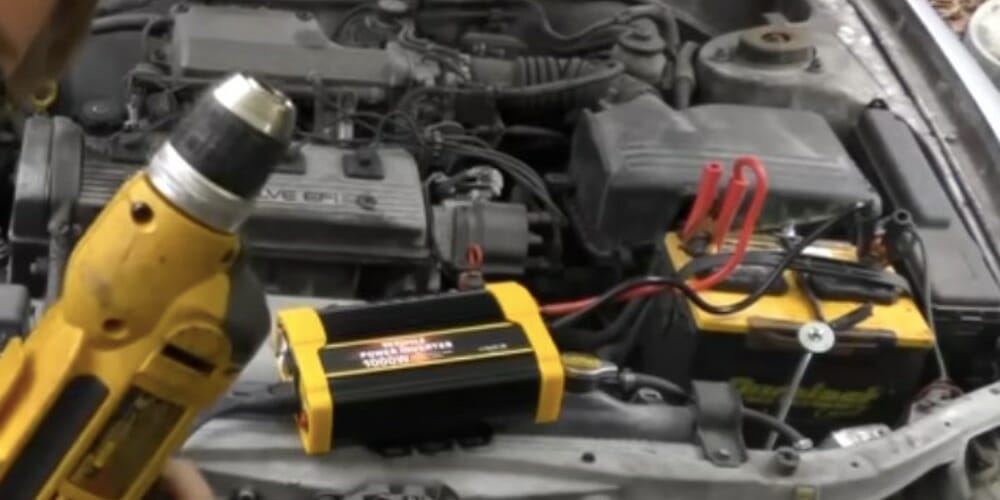
You can easily wire an extension cord to a car battery, but you must take certain precautions.
An extension cord allows you to extend the range of a power source or outlet so that you can use it for a device that is physically at some distance away from it. Like the extension leads you normally use with the AC power outlets in your home, you can make a similar extension connected to your car’s battery.
Wiring an extension cord to a car battery is also helpful if you’re stranded with no power.
If connecting another good battery to jump-start the car, you only need a jumper cable with a pair of leads and connect the same polarity terminals before starting the car. If you want to use an extension cord or power strip for a DC device, the procedure is similar, but for an AC device, you will need an inverter between the battery and the extension cord.
I will show you how to wire an extension cord to your car’s battery and also tell you about other important precautions.
Important Notes and Requirements
Twelve volts DC only!
The car battery will give you a supply of 12 volts of DC.
This means you can only use it for devices and appliances that run on DC if connected directly and which require 12 volts to operate.
| Under no circumstances should you connect the cord to a main 120/240-volt AC power outlet/supply. Also, you cannot connect any appliance that requires AC. To do that, you would need a DC-to-AC converter called an inverter. |
Jumper or Connector Cables
The only thing you need to make this extension cord (for 12 volts of DC) connected to your car’s battery is a set of jumper cables (also called connector leads).
The jumper cable length depends on how long you need to extend the supply or how far the device you’re going to use is from the battery. Jumper cable lengths normally range between 5 and 30 feet.
We’re now going to convert or use these jumper cables as extension cords.
Connecting an Extension Cord to a Car’s Battery
Three Scenarios
We will consider three scenarios for why you might want to connect an extension cord to a car battery:
- To jumpstart a car if you have a dead battery.
- Connect a DC device inside or outside the car (whether the cigarette lighter socket works).
- To connect an AC device to your car’s battery, you will also need an inverter and a power strip, if you prefer, or an outlet.
| In all these scenarios, don’t make the mistake of connecting opposite polarities. Otherwise, you will create a short circuit, and the battery will deteriorate. |
Jumpstarting a Car
One situation where you might want to extend the power from a battery is to jumpstart your car if its battery is too weak or dead to start the car on its own.
Step 1: Place a Good Battery Close By
Park the car and place a good battery (or another car with a working battery) close to the dead battery as possible. If the batteries are covered, remove the covering so that their terminals are exposed. Also, ensure they are clean, without any dirt or corrosion covering them.
Step 2: Connect the Leads
Connect one lead’s clips to both batteries’ positive (+) terminals and the other to the negative (-) terminals. The color does not matter as long as each lead is used for the same (or like) terminal on both batteries, but usually, you would attach the red one to positive and black to negative. Ensure all four clips are firmly connected.
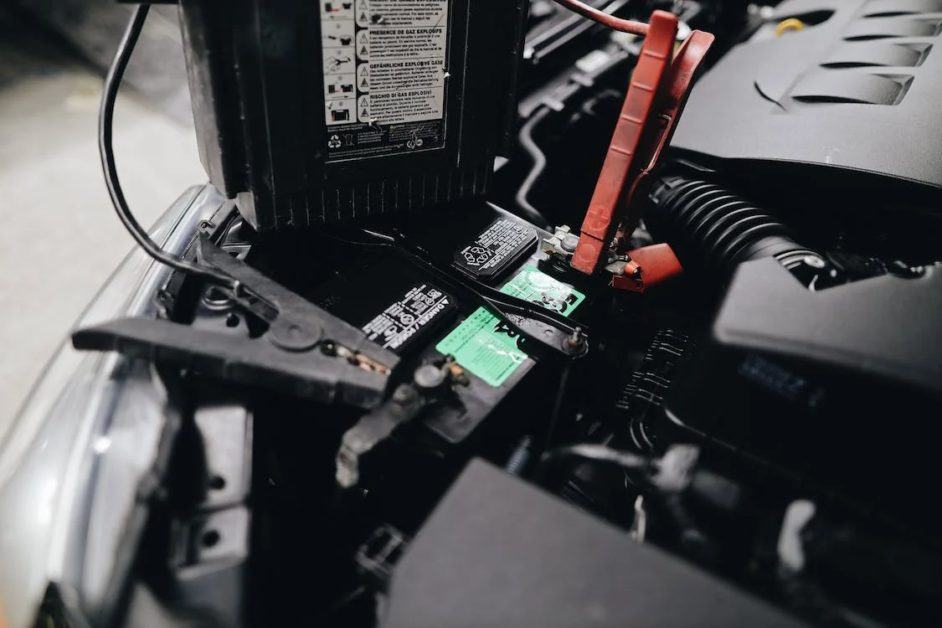
Step 3: Start the Car
Once the two leads are in place, start the car’s engine and let it idle for a short while before removing them. If the good battery has enough charge, the car should start easily. Otherwise, there might be some other problem with your car.
Step 4: Disconnect the Leads
While the car’s engine is running, disconnect the leads, starting with the one connected to the negative terminals. When you drive your car, its battery should charge itself from the alternator. It might be a weak battery that needs servicing or replacing if it doesn’t.
Connecting a DC Device
Connecting a DC device to a car battery is also straightforward.
Connect the leads, ensuring the like polarities are connected. Once the extension cord is connected directly to the car’s battery, you can plug in a 12-volt DC device and enjoy using it immediately.
However, don’t overload the circuit, and don’t make heavy use of it while the car is not being driven.
Alternatively, you can use a jumper cable with clips at one end but a socket at the other, in which case you will not need a separate extension cord.
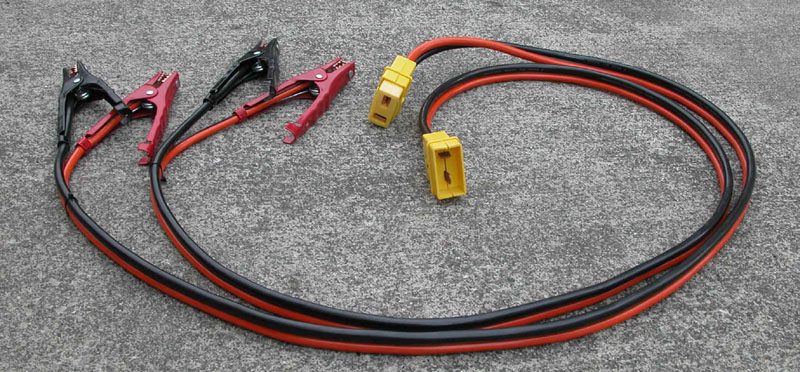
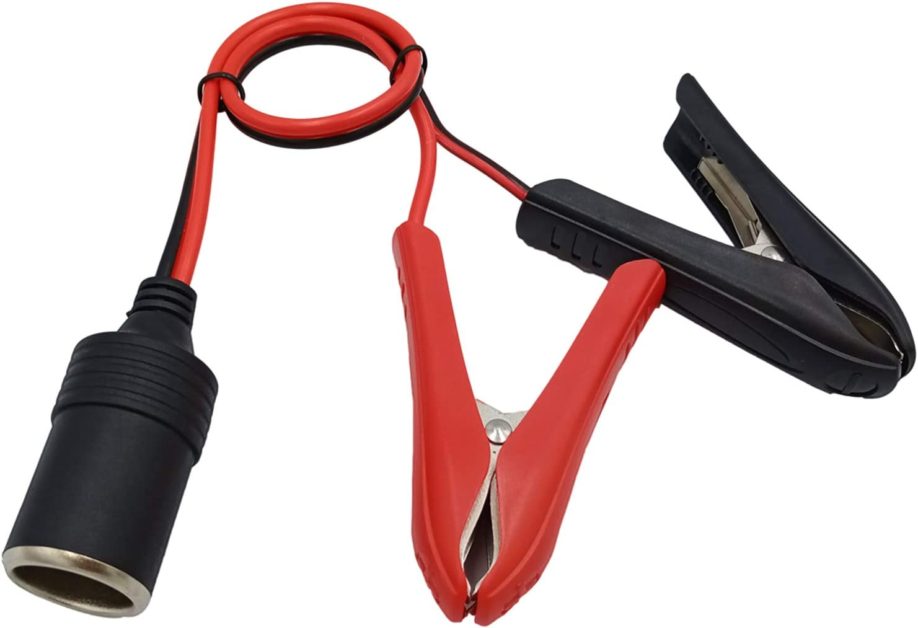
Connecting an AC Device
To use an AC device with your 12-volt DC car battery, you will need an extension cord or power strip and an inverter designed for 12-volt batteries.
I recommend that you use a 600-watt inverter kit. It should also come with wires, so you don’t need to use your jumper cable. There might also be a wiring diagram, but you can follow the steps below.
| When connecting a power strip to a car battery, the power strip’s amperage should not exceed that of the battery. Usually, a car battery can supply between 30 and 80 amp hours. The rating should be stated on the battery itself. Also, only use the power strip for low-power devices, such as LED lights or fans. Don’t overload the circuit. |
Step 1: Connect the Wires
Connect the wires between the car’s battery and the inverter.
As in the first scenario, whichever color you use, ensure only the like or same terminals are connected using the same lead. Usually, you would use the red one for positive and the black one for negative.
You can connect the negative lead at the dead battery end to a ground connection. Regardless, ensure that all the connections are secure.
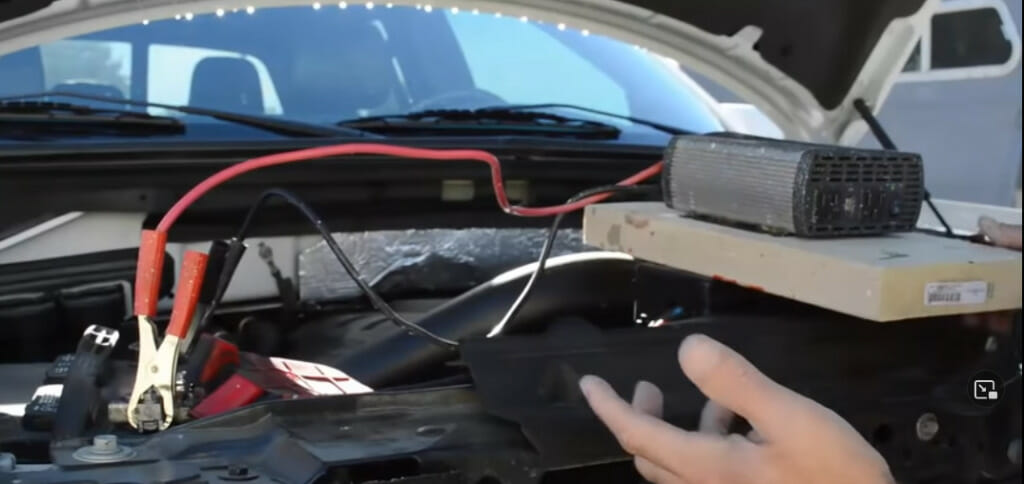
Step 2: Plug-in the Extension Cord
Plug in the extension cord.
Since you’re going to use it on a DC circuit, ensure the right terminals are connected.
Step 3: Turn the Inverter On
With both wires between the battery and inverter connected, and the power strip plugged in, you can now attach the AC device to the power strip and use it.
When disconnecting, remember to turn the AC device off first before switching the inverter off.
Tips
When using an AC device with your 12-volt DC car battery via an inverter and extension cord, power strip, or power outlet:
- Only use a low-power device
- Only use one device at a time (otherwise, the battery’s capacity will drop quickly)
- Use the device for short periods, not for constant use
Video References
Scotty Kilmer
Survivalist Prepper
